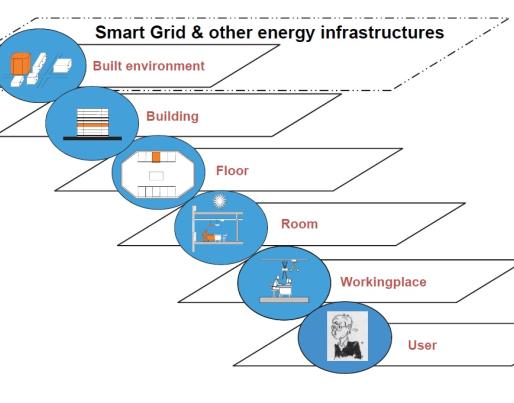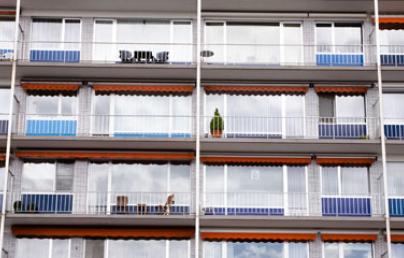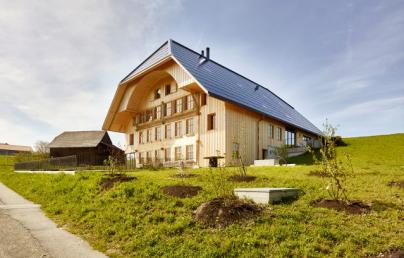OVERVIEW | Building operation: the elusive alignment of research, design and occupants

OVERVIEW | Building operation: the elusive alignment of research, design and occupants
From January 2021 all new construction in the EU must achieve the nearly-zero energy buildings standard, and existing buildings will have to be renovated at a faster rate. While the carbon emissions from buildings in operation should be reduced, their actual energy consumption relate to a more complex combination of factors.
When exploring building operation and its relationship with energy efficiency in buildings, one may consider only the aspects of building occupancy and occupant behaviour. In addition, design choices are often informed by models in which occupant behaviour is assumed to remain constant or is left out of the equation. Better design choices should instead consider the variability of occupant behaviour, in order to make better predictions of how buildings perform during the operation phase.
There is no guarantee that during building occupation the building operation will remain as designed. This is especially the case when new technologies are installed in buildings, including insulation, and when high levels of building fabric efficiency and new technologies (such as RES) are in place. Changes in comfort expectations and in occupancy trends (such as teleworking, co-working, and home-sharing) often result in an increased energy impact from building occupants, compared with what is expected.
Another crucial aspect as to how a building is operated closely relates to how the building allows its users to interact with it. As such, designers face the challenge not only to predict the building performance (internal temperatures, protection from the climate, etc.) but also to establish a degree of interaction between the occupant and the building. Such interaction is by its own dynamic nature hard to predict, and innovation in buildings (such as smart energy technologies, innovative materials as well as innovative design methods like BIM) makes this interaction potentially more unpredictable. These aspects have proven to be particularly important in the maintenance of thermal comfort of occupants. As buildings are equipped with more adaptive capabilities (solar shading, secure night ventilation, cross ventilation, buffer zones, etc.) the harder it is for designers to attempt a prediction of building operation and hence of energy use. Annex 79 of the International Energy Agency's Energy in Buildings and Communities Programme (IEA EBC), Occupant-centric building design and operation, underpins these trends to provide a new look at how occupants are incorporated into building design and operation practice throughout the building life-cycle.
This uncertainty has seen a rise in the deployment of the post-occupancy evaluation of buildings (compulsory to some types of buildings) in order to form a sound understanding of how buildings operate. To bridge the gap between prediction and performance, several research projects are actively collecting large amounts of data that may inform a process of design that has different expectations from designers.
The Smart Readiness Indicator (SRI) for buildings was introduced in the 2018 revision of the Energy Performance of Buildings Directive (EPBD) and aims to further promote smart building technologies. An SRI would allow buildings to be rated for their smart readiness, i.e. the capability of buildings (or building units) to adapt their operation to the needs of the occupant and to adapt their operation in reaction to signals from the grid (energy flexibility). A Smart Readiness Indicator could inform building owners and users of the extent of the building operation and could give confidence to occupants about the actual savings of newly enhanced functionalities.
Attention is currently being given to the degree in which energy flexibility is required for a building, to manage its energy demand and generation according to local climate conditions. This creates a more direct link between user needs and grid requirements. The concept of Energy Flexibility of Buildings has been explored in IEA EBC Annex 67 Energy Flexible Buildings that points out the importance of a paradigm shift in which the operation of a building is carried out while simultaneously interacting with its surrounding energy networks.
Several funding schemes support the collection of data from buildings in operation in order to inform design. Among them, the ExcEED project (European Energy Efficient building district Database) is funded by the European Commission under the H2020 programme and collects data from new, modern and energy efficient buildings (such as energy performance, CO2 emissions, etc.). Data gathered through post-occupancy evaluation is stored in the ExcEED database, and will help building managers to improve the indoor environmental quality for the occupants by focusing on the perceptions of the occupants.
The main objectives of the 4RinEU project (Reliable Models for Deep Renovation) are to minimize failures in design and implementation, to manage different stages of the deep renovation process, and to provide information on energy, comfort, users’ impact, and investment performance. Within this large multinational Horizon 2020 project data is collected through monitoring the pre- and post-renovation states of the building. This data is then used in the dynamic modelling of the deep renovation project to ensure that the virtual behaviour of the building correctly represents its real status, as well as evaluating the efficacy of the renovation after it has been completed. The 4RinEU project introduced a tool called the Sensible Building Data Handler. This Data Handler takes real-time data from the building, post-processes it to allow for analysis and allows customized information to be given to the building users and to investors in projects of building energy retrofit. This tool gathers, organises and analyses large amounts of data that is needed in the various phases of a deep renovation project.
The SMART-UP project is another Horizon 2020 funded project, and it is dedicated to understanding the impact that tailored energy advice can have on the active use of a smart meter and in‐home display to manage energy consumption in vulnerable households. This was achieved by developing a training program for installers, social workers and other frontline workers in contact with vulnerable consumers. These actors would then enable vulnerable consumers to be aware of the benefits of smart metering and to advise them on how to get the most out of their smart meter. This project was able to encourage participating households to engage in more (and more positive) energy efficient behaviours. However, it also made visible the complexities and tensions inherent in encouraging CO2 emissions reduction through energy savings within an already vulnerable population likely to be living in energy poverty. As a result, the project highlighted the need to combine behaviour change advice with other measures (such as the provision of energy efficiency measures, income maximization advice, etc.). This would ensure that poor households are able to meet their energy needs for comfort and warmth whilst carrying out positive energy saving behaviours that would not be detrimental to their health and wellbeing.
The H2020 MOEEBIUS project aims to promote the enhancement of customer confidence in the Energy Performance Certificate, by enhancing its ability to guarantee results and mutually agree with customers on savings targets. This way, the project will reduce business risks that may have hindered the growth of energy service companies, especially at EU level. In addition, one of the main objectives of H2020 MOEEBIUS project is to reduce the performance gap by a holistic approach towards more accurate predictions, real time building performance optimisation, and real time peak load management optimisation. In other words, it addresses the sphere of building operation complexities enhancing current (passive and active building elements) modelling approaches and delivers innovative simulation tools.
A bottom-up approach to encourage occupants to take control (in the form of understanding) of their environment with a hands-on approach has been undertaken by Dublin’s energy agency, Codema. Codema is making it easier for the public to understand how their home uses energy and to identify possible savings, by developing a kit of six easy-to-use tools and measuring instruments that householders can borrow (free of charge) to identify common problems such as lack of insulation, poor ventilation and inefficient appliances that might be driving up electricity bills. The six tools address key areas of energy use in the home, such as space heating, hot water and electricity consumption. The project is supported by Dublin City Public Libraries and the Sustainable Energy Authority of Ireland (SEAI) and the Home Energy Saving Kit won the Consumers Award of the EU Sustainable Energy Awards 2017.
Two other Horizon 2020 projects addressing energy-savings and building user’s behaviours are eTEACHER and MOBISTYLE, considering in particular interactive IT interfacing to raise awareness and to encourage optimal use. This is conducted by motivating behavioural change of end users by combined modular information on energy use, health and lifestyle. Specifically, the MOBISTYLE introduces games to its occupants as a solution that will encourage occupants to be more energy efficient in comparison to the other users (mutual-control) and in relation to past achievements (self-control).
To conclude, the subject of building operation inevitably presents areas where knowledge acquisition is still required. However, the initiatives presented here are evidence of how widely the subject of building operation is currently being treated. Such richness appears to be a solid foundation to advance that much-needed knowledge, and to transfer that knowledge of buildings in operation, so that ultimately CO2 emissions reductions during the building operation phase can be implemented.
From the industry’s side, and to fill the gap in knowledge transfer and to promote the development of professional skills in energy efficiency, several events are taking place in Europe as this is being written. One event has been organised during the Barcelona Building CONSTRUMAT’19. Within this international trade fair, BUILD UP is holding a one-day workshop on 16 May 2019 to promote upskilling of the building sector to meet the challenges of new European energy and climate targets. Previous events have seen the consortium of different research projects under the same umbrella of knowledge sharing.


